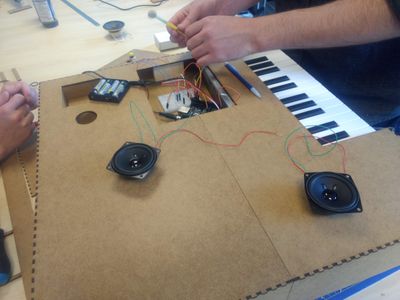The chain of communication, the role of the musician vis-à-vis computer-generated music.
Labeling of musical structure: speed, phrasing, harmonic and melodic tension, repetitive patterns, articulation, accents, ensemble timing.
Emotion expression: composition's inherent expression, acoustic parameters and their mapping to emotion expression, synthesis, automatic recognition, comparison to other modalities (facial expressions, gestures, speech), cultural and embedded codes.
Connections to movement: dance, different gestures, end ritardando, and phrasing.
The musical context: concert, background, film music.
The MIDI standard: encoding, control options, Standard MIDI Files, General MIDI.
Synthesis; synthesis methods, sampling, physical models, sound libraries.
Computer tools: pd (pure-data), Director Musices, Digital Audio Workstations, musical notation software, sampling instruments.
Having passed the course, the student should be able to
- identify and explain principles of musical communication including structure, emotional expression and gestures in order to compare different music products
- select and use software to process music in symbolic form, in audio format, or through synthesis in order to influence the communication
- describe and analyse control aspects of musical instruments with respect to limitations, expressive freedom, and parameter mapping in order to modify these aspects in new prototypes
- apply results from scientific literature within musical communication in practice
- use programming languages for music in order to implement basic sound synthesis and process control data in real time
in order to
- receive a solid scientific understanding of basic principles of how music is communicated from musicians to listeners
- be able to apply this in new music applications, including new ways of musical interaction.
